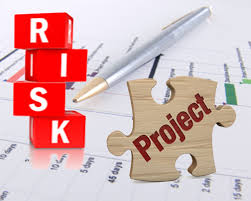When you begin the project planning process, one of the first questions you should ask yourself is, “What may go wrong?”
It may sound pessimistic, but pragmatic project managers understand that this kind of thinking is preventative. Issues will surely arise, and you will need a risk management strategy in place to know how to manage risks during project preparation.
But how do you go about tackling the unknown? In this post, we’ll talk about ways for getting a peek at potential risks so you can identify and track them on your project. You’ll learn how to create a project risk management plan and how to do the assessment.
What exactly is Project Risk Management (PRM)?
Project risk management is the process through which project managers manage potential risks that may have an impact on a project, both favorably and negatively. The goal is to reduce the severity of these dangers.
What is a Risk?
A risk is defined as any unexpected incident that may have an impact on people, technology, resources, or processes (including projects). Risks, as opposed to routine problems, are situations that can occur abruptly, and sometimes completely unexpectedly.
Project managers do not always know the risks the project will face when they will occur, and why. Because of the significant degree of uncertainty, project risk management necessitates a serious and thorough approach.
In a nutshell, the Project Risk Management process is detecting risks, analyzing them, and then responding to any hazards that may develop during the project’s life cycle.
This is done to restrict the risk’s implications as much as possible so that objectives will be accomplished in the future.
Who is in charge of Project Risk Management?
Although Project Risk Management is the same for every project, it can take various forms. Varied project kinds and sizes necessitate a different approach to risk management.
Many large-scale projects devote a significant amount of time and effort to comprehensive risk management and problem-solving solutions.
A simple prioritized list of the high, medium, and low priority risks is sufficient for smaller projects.
Project Risk Management Assessment
A proper risk assessment in project management would not only lessen the chances of a negative event occurring but would also help minimize the scale on which it occurs. An unforeseen negative outcome is a project manager’s worst nightmare; from project procurement to project implementation, a million and one things could go wrong. This is where project risk management assessment or risk evaluation comes into play.
Risk Assessment
Risk evaluation is a risk management concept that is primarily concerned with analyzing the probabilities and size of specific hazards. To determine the importance of the risk, the approximated risk is compared to predefined risk criteria.
It takes into account any relationships between components that are either within or beyond the scope of the study. Actuaries or risk assessors are always in charge of this process.
The Importance of Project Risk Management Assessment
A well-executed project is dependent on the capacity to undertake a thorough risk assessment before the project’s start. This assures that project team members not only know what to expect but also grasp the magnitude of such an unforeseen event.
It allows stakeholders to create a contingency plan that can help them plan better and then accept, relocate, or eliminate risks.
A safety statement is the result of a risk assessment. The safety statement guarantees that:
- The organization operates ethically.
- In the event of a lawsuit, all stakeholders have legal protection.
- It ensures that the organization is financially prepared for any expenses that may arise.
Steps in Project Risk Management Assessment
#1. All potential dangers are identified by the risk assessor.
To identify hazards, the assessor could consult a database of similar previous projects. A brainstorming session is then organized to refresh team members’ memories of previous events while paying particular attention to personal relationships, team dynamics, and disregarding all criticism.
The assessor will attempt to discover the core cause of the risk by focusing on the aspects that are crucial to the project’s success while everyone brainstorms on concerns that could cause those success components to fail. Questions like, “What can happen?” ” “Where would it occur? ” “How could this happen? ” as well as “How would it happen? ” are posed.
It would also be useful to know whether the dangers are physical, legal, strategic, or financial.
#2. Risk classification
The risk assessor categorizes all detected risks based on probability and impact at this stage of the risk assessment.
The assessor considers the likelihood of the risk occurring and categorizes it as low, medium, or high. In terms of impact, consider how far it can spread and who or what places might be affected. This might also be categorized as low, medium, or high.
#3. Risk Evaluation
The actuary or assessor (depending on who you choose) decides how to treat the higher priority risks while evaluating the risk. An insurer may be called upon to offer risk coverage.
In some circumstances, suggestions for reducing or eliminating the risk may be made; the activities surrounding it may be altered, and lower or medium category risks will be watched to determine whether they evolve into higher category risks.
#4. Analyses and Evaluations are documented, and appropriate recommendations to the project team are given.
Contingencies are put in place at this stage of the project risk assessment to secure the project and all assets. This is accomplished in a couple of ways:
- Taking on the risk
- Transferring the danger (to an insurer)
- Acceptance of the danger
- lowering the risk
Aspects of a Risk Management Plan
There will be hazards in any web design and development project, construction project, or product design. That is simply the essence of project management. But that is also why it is always essential to plan ahead of time by building a project risk management strategy. A project risk management plan normally consists of a few aspects, which are detailed below.
#1. Recognize Potential Hazards
Risk identification takes place both at the project and throughout the project. While many dangers are deemed “known risks,” others may necessitate extra investigation.
Create a risk identification checklist tailored to your project type to detect risks. This can be accomplished by interviewing all stakeholders and industry experts. Many hazards can be classified as technical or organizational, and then identified by particular subcategories such as technology, interfaces, performance, logistics, budget, and so on. Create a risk repository that you can share with everyone you interviewed to have a centralized location for all known dangers discovered during the identification process.
#2. Create a graph that compares the impact to the likelihood.
In this management phase, you will review the qualitative and quantitative impact of the risk, such as the likelihood of the risk occurring vs the impact on your project, and lay it out in a matrix or spreadsheet.
To begin, you will provide a probability score for the danger likelihood ranging from low to high. Then, you’ll rank your risk impact from low to medium to high and assign a score to each. This will provide you an indication of how probable the risk is to have an impact on the project’s success, as well as how immediate the response will need to be.
To make the matrix easier to grasp for all team members and stakeholders, provide an overall risk score by multiplying your effect level score by your risk probability score.
#3. Create a Risk Response Plan
Planning your risk response normally consists of three basic concepts: removing your risk and minimizing both the impact of the risk on the project and the risk occurrence. Doing so usually comes at a cost, either in terms of time or money. As a result, you should have your time, money, and scope properly laid out before developing your risk management plan.
#4. Assign risk to an Owner.
In addition, you should assign a risk owner to each risk. While the project manager is normally the default, you should be specific. When creating your matrix, include the owner of each risk so that no one is unclear about who will be responsible for implementing the reaction if the risk happens, and owners may take prompt action.
Make a note of the specific response and have it authorized by all stakeholders before implementing it. That way, you’ll have a record of the problem and its resolution to go over once the project is finished.
#5. Recognize Your Triggers
This can occur with or without a risk already affecting your project, and it is especially common during project milestones as a manner of reviewing project progress. If they have, think about reclassifying the existing hazards.
Even if certain triggers have not been satisfied, it is advisable to develop a backup plan as the project progresses—perhaps the criteria for a given risk will no longer exist when a certain point in the project has been achieved.
#6. Create a Back-Up Plan
Consider your risk impact and probability matrix to be an ever-changing document. Your risks’ classification can change at any time during your project, therefore you must develop a contingency plan as part of your process.
Discovering new risks throughout project milestones and reevaluating existing risks to see whether any conditions for those risks have been met are examples of contingency planning. Any risk reclassification necessitates a little adjustment to your backup plan.
#7. Determine Your Risk Threshold
Measuring your risk threshold entails determining which risks are too high and discussing with your stakeholders to determine whether it is worthwhile to continue the project—worth it in terms of time, money, or scope.
Consider your risks that have a score of “very high” or more than a few “high” ratings, and engage with your leadership team and stakeholders to assess if the project itself is at risk of failing. Risks that necessitate additional consultation have crossed the risk threshold.
Best Practices for Keeping Your Project Risk Management Plan Up to Date
Project risk management plans only fail in a few ways: progressively due to lack of money, through modeling errors, or by blatantly ignoring your risks.
Your risk management plan evolves during the duration of the project, from start to finish. As a result, the best practices are to concentrate on the risk management plan’s monitoring phase. Continue to assess and reassess your risks and their respective scores, and address risks at each project milestone.
Project Risk Management FAQs
What are positive risks in project management?
Positive risk is any condition, event, occurrence, or situation that has the potential to benefit a project or organization.
What is a high risk project?
High-risk projects are those that are highly visible, have a broad influence both within and outside of the business, and represent major challenges to the project team’s ability to deliver.
What are positive and negative risks in project management?
Positive risk, in general, is something you should always be open to, and even encourage, because it has valuable repercussions for your project. Negative risk, on the other hand, is the inverse, and the worst-case scenario for such risk is project failure.
- Business Impact Analysis BIA: Detailed Process Steps & Examples
- STRATEGIC RISK MITIGATION: How to do it Rightly
- Project Scope Management: Definition & Scope Management Plan Examples
- Project Scope Statement: Guide for Creating a Scope Statement with Examples
- Risk Mitigation: Examples & How to plan for Risk Mitigation
- Financial risk: Definition, Types, Management, Overview, Analysis (+ free pdfs)
- MARKET RISKS: Best Practices and Easy Guide with Examples






